
Section F Roman, Muslim, and Crusader Periods
Chapter 64 - Nea Church (Byzantine)
Emperor Justinian (527-565) had the Nea Church (“nea” is Greek for “new”) built on the east side of the Cardo Street in the southern part of Jerusalem. The Nea Church can be clearly seen on the Madaba Map. This 375 by 185 foot basilica, the largest church in Israel, was dedicated in 543. Justinian’s Roman court historian, Procopius, notes that this massive church was not built over a traditional holy site, so it was meant to serve some other purpose. It included a library, a monastery, a hospital and a hospice. Procopius says the structure was built with enormous cut stones on a huge platform, which was supported by large underground vaults. The roof was built of very tall cedars, and many large pillars filled the basilica.
For several reasons, it appears that Justinian believed he was building a new Temple to replace Solomon’s and Herod’s. It is highly probably that the Nea Church was built to hold the Temple treasures taken from Herod’s Temple by the Romans in 70 AD.
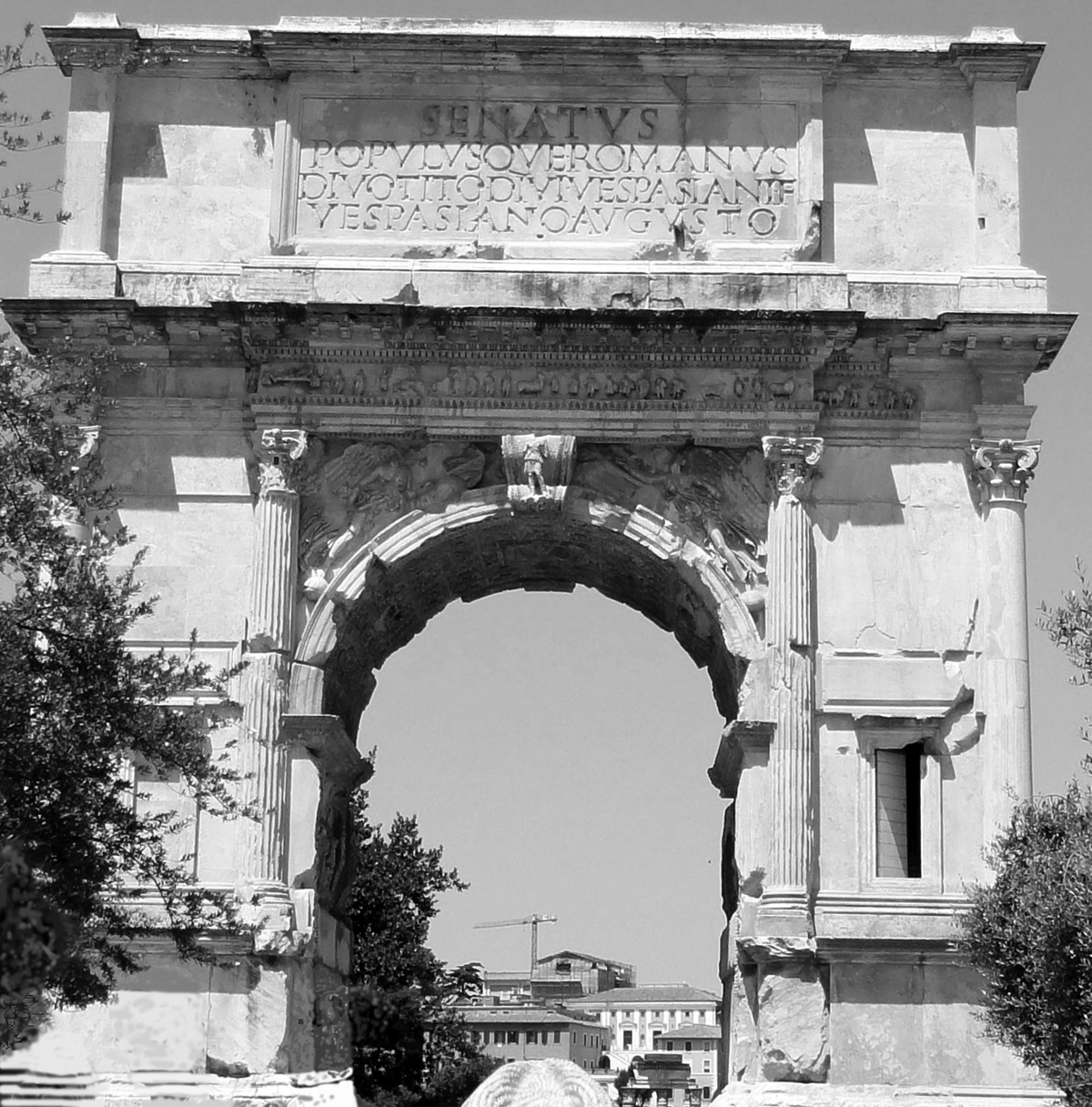
The Arch of Titus, located in Rome southeast of the Roman Forum, commemorates Titus' victory over the Jews and the end of the 66-70 AD Jewish revolt. This triumphal arch was built in 82 AD. The modern importance of this arch is in the engraving found on the inside which shows the Temple treasures being carried into Rome by Roman soldiers after their destruction of the Temple and the city of Jerusalem in 70 AD. The image clearly shows the golden Table of Showbread, the golden Candle Stand, and the trumpets used by the priests. Many other items from the Temple can also be assumed to have made it to Rome. It seems these Temple treasures were taken from Rome by the Vandals but recaptured by the Romans of the Byzantine Empire and taken to Constantinople. The Temple treasures portrayed on the Arch of Titus may have ended up stored in the Nea Church by Justinian.
(Photo by Bill Wallander)

The inscription above the Arch of Titus reads:
SENATUS
POPULUSQUE-ROMANUS
DIVO-TITO-DIVI-VESPASIANI-F
VESPASIANO-AUGUSTO
This translates as:
The Senate
And People of Rome (dedicate this to)
The Divine Titus, Son of Divine Vespasian,
Vespasianus Augustus
Titus’ full name is Titus Vespasianus Augustus. This monument was credited to the Senate and People of Rome and was constructed shortly after Titus’ death at the hand of his brother Emperor Domitian. (Photo by Bill Wallander)
The Arch of Titus was built in Rome in 82 AD to commemorate the Roman victory over the Jews. It is clear from the images on the Arch that the Golden Candle Stand, the Table of Showbread, and trumpets from the Temple were carried into Rome. Josephus himself testifies to this fact in his book, Wars of the Jews, book 7, chapter 5:
After these triumphs were over, and after the affairs of the Romans were settled on the surest foundations, Vespasian resolved to build a Temple to Peace, which was finished in so short a time, and in so glorious a manner, as was beyond all human expectation and opinion: for he having now by Providence a vast quantity of wealth, besides what he had formerly gained in his other exploits, he had this temple adorned with pictures and statues; for in this temple were collected and deposited all such rarities as men aforetime used to wander all over the habitable world to see, when they had a desire to see one of them after another; he also laid up therein those golden vessels and instruments that were taken out of the Jewish temple, as ensigns of his glory. But still he gave order that they should lay up their Law, and the purple veils of the holy place, in the royal palace itself, and keep them there.
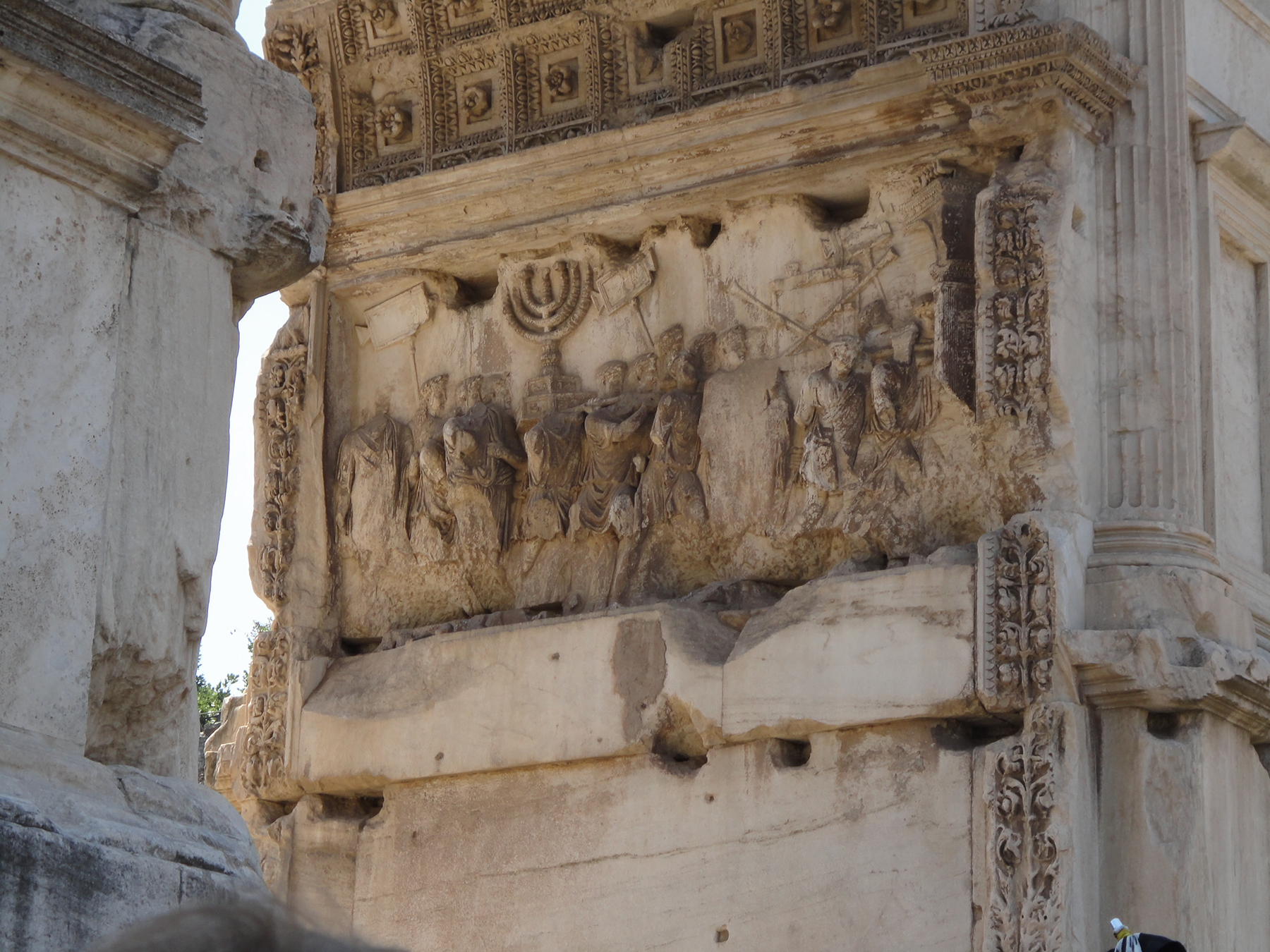
Images from the inside of the Arch of Titus showing the Roman triumphal procession into Rome with the Temple Treasures. (Photo by Bill Wallander)
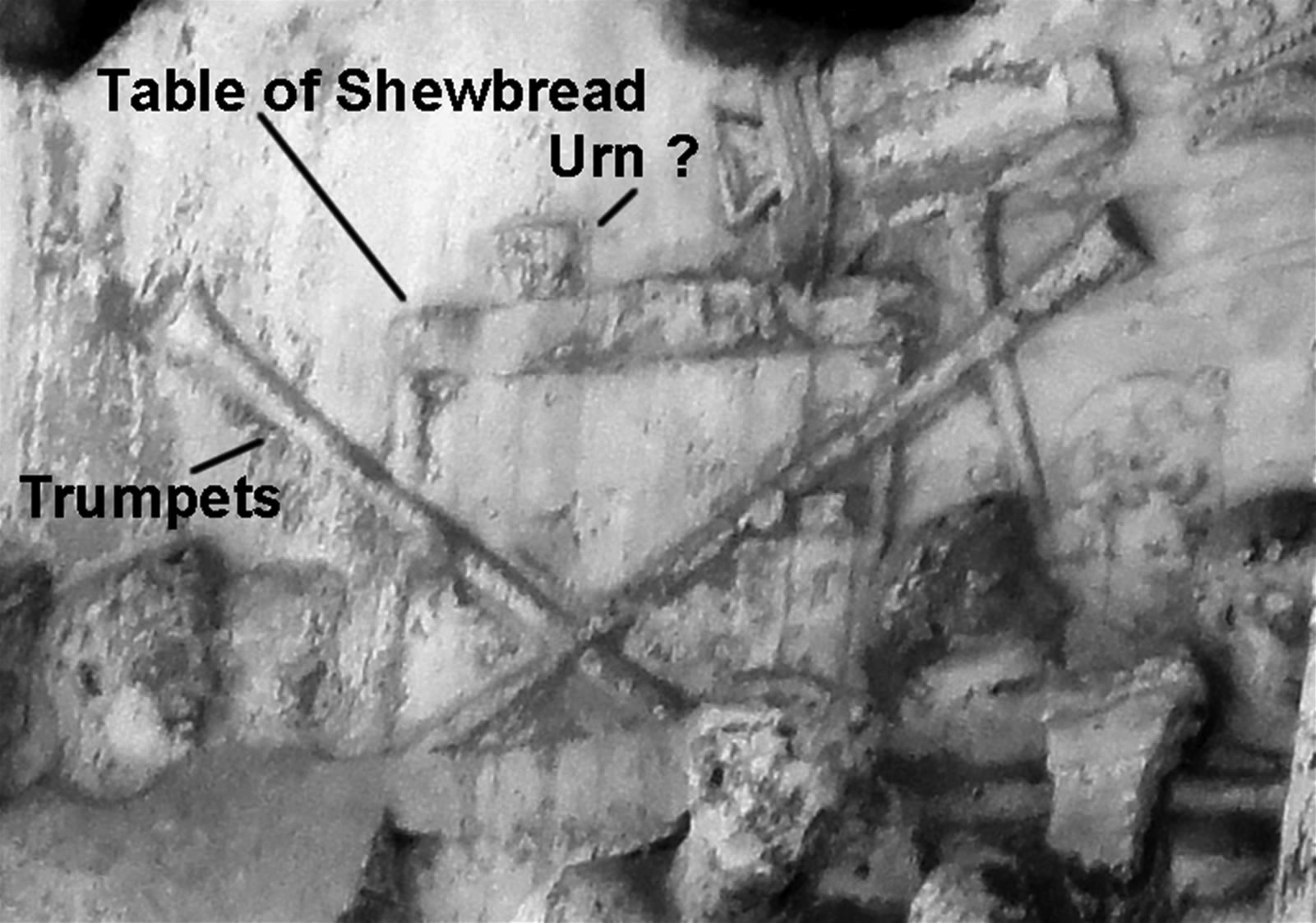
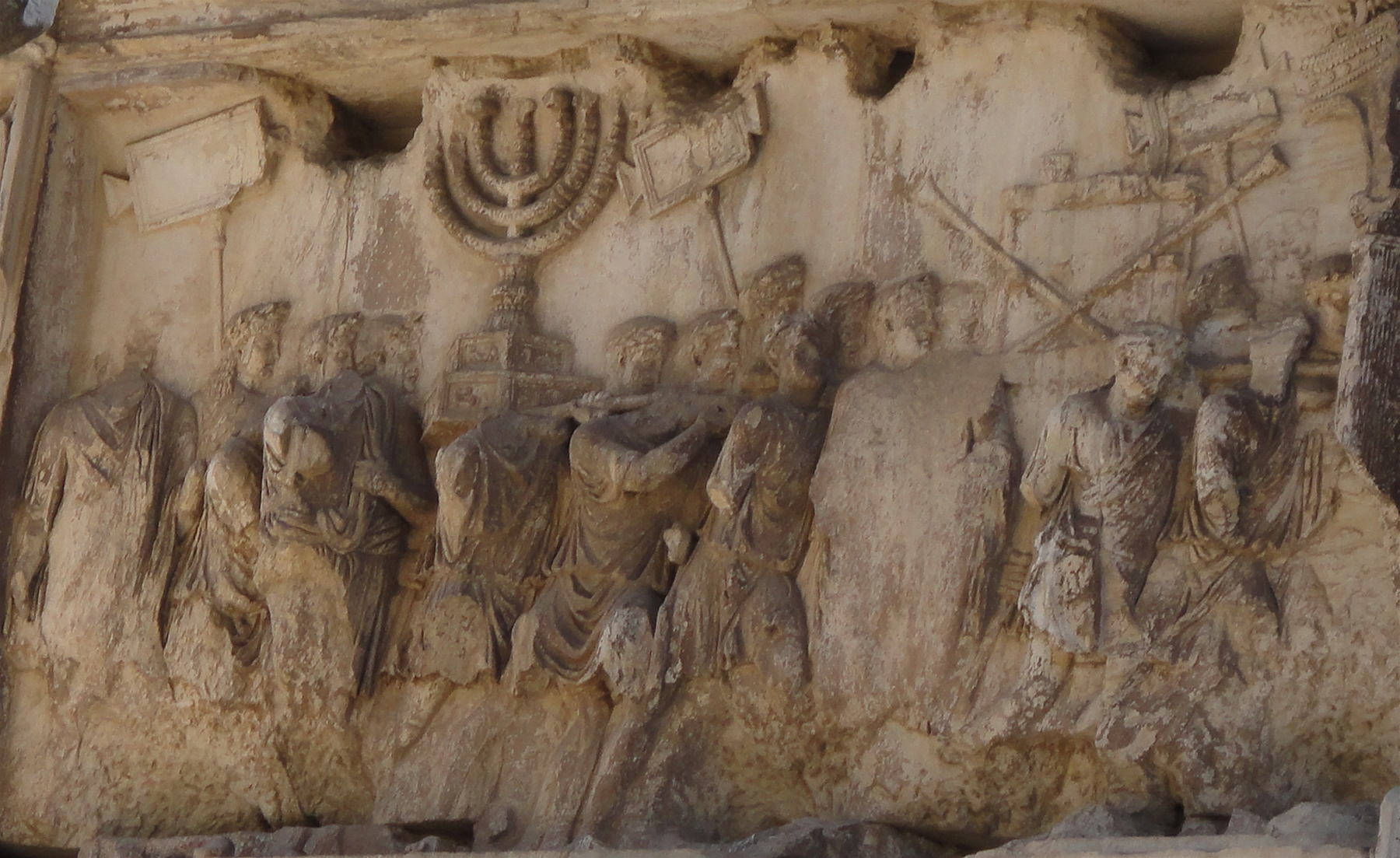
A close up of the triumphal procession. Notice the Candle Stand and the two trumpets which form an “X” over the Table of Showbread as the Romans carry them into Rome. (Photo by Bill Wallander)
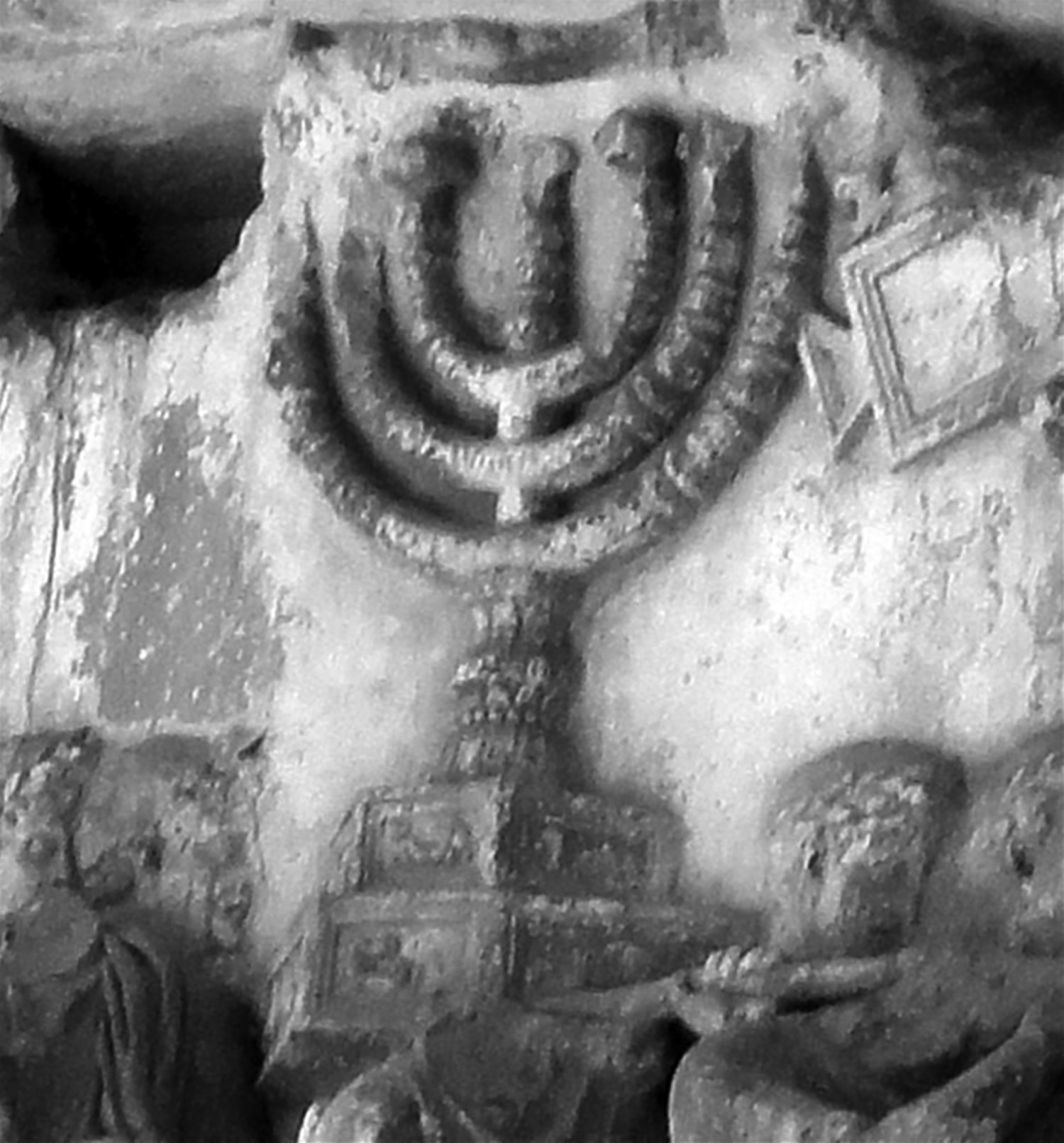
The Golden Lamp Stand from Herod's Temple of 70 AD.
Above photos by Bill Wallander
The Temple treasures were kept in Rome until Rome fell to the Vandals. The Vandals were in turn defeated by the Byzantine Empire, which recovered the Temple treasures and took them to Constantinople. During the triumphal procession through Constantinople with the captives and goods taken from the Vandals, the Jewish Temple treasures where seen among the booty. Procopius records these events of his own day in History of the Wars, book IV, chapter 9:6-9:
. . . among these were the treasures of the Jews, which Titus, the son of Vespasian, together with certain others, had brought to Rome after the capture of Jerusalem. And one of the Jews, seeing these things, approached one of those known to the emperor and said: "These treasures I think it inexpedient to carry into the palace in Byzantium. Indeed, it is not possible for them to be elsewhere than in the place where Solomon, the king of the Jews, formerly placed them. For it is because of these that Gizeric captured the palace of the Romans, and that now the Roman army has captured that the Vandals." When this had been brought to the ears of the Emperor (Justinian), he became afraid and quickly sent everything to the sanctuaries of the Christians in Jerusalem.
Forty-nine years after the death of Justinian and seventy years after the dedication of the Nea Church the Persians captured Jerusalem with help from their Jewish allies. The Nea Church was plundered in 614 by the Jews and Persians. History records that all churches in Israel at this time, with the exception of the Church of the Nativity in Bethlehem, were burnt by the Persian invaders and their Jewish allies. The fact that these churches were plundered is confirmed by the fact that the Persians captured what the Christians thought was the “True Cross” from the Church of the Holy Sepulcher. It would appear then that the Temple treasures taken to Rome by Titus in 70 AD and returned to Jerusalem by Justinian in 534 were possibly taken back by the Jews in 614 from the Nea Church.
After the fall of Jerusalem to the Persians in 614 we lose track of the Temple treasures. What happened to them? Were the Jews silent about their re-discovered Temple treasure? Were the Temple treasures carried away by the Persians? Maybe melted down? Or, were they never located nor removed from their hidden compartments in the lower regions of the Nea Church?
Are they still there today?
By 617, only three years after victory, the Persians betrayed their Jewish allies by expelling them from Jerusalem and returning Jerusalem to the Christian control of the Byzantine Empire. (Note that the Persian invasion of 614 was not associated with Islam, since it was not until 622 that Mohammed began to spread his new religion. By 626 Mohammed began slaughtering the Jews of Medina, and the Muslim “faith” began to spread. Muslim war and conquest would arrive in Jerusalem in 638, a mere 21 years after the Persians restored it to the Christians.)
Although plundered and burnt, we know that the remains of the Nea Church continued to stand for several centuries, since it was described by pilgrim writers as still in use in 634 and 808. In fact, in 870 a monk stayed in what was called Charlemagne’s rebuilt Nea Church.
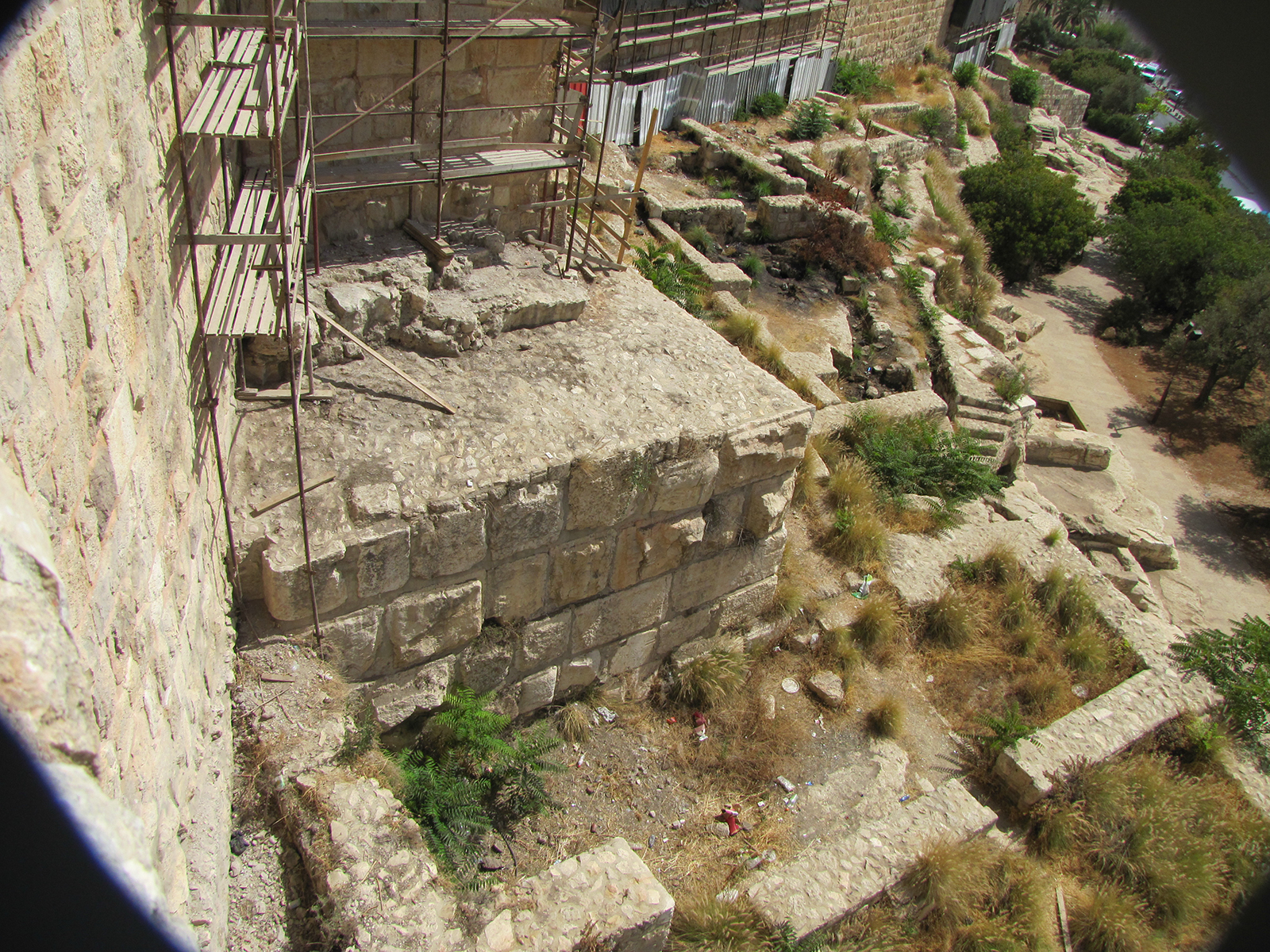
Photo of the outside the southeast corner of the Nea Church, which contains the southern apse of the church on the inside. The current city wall runs on top of the Nea Church, as can be seen in this photo.
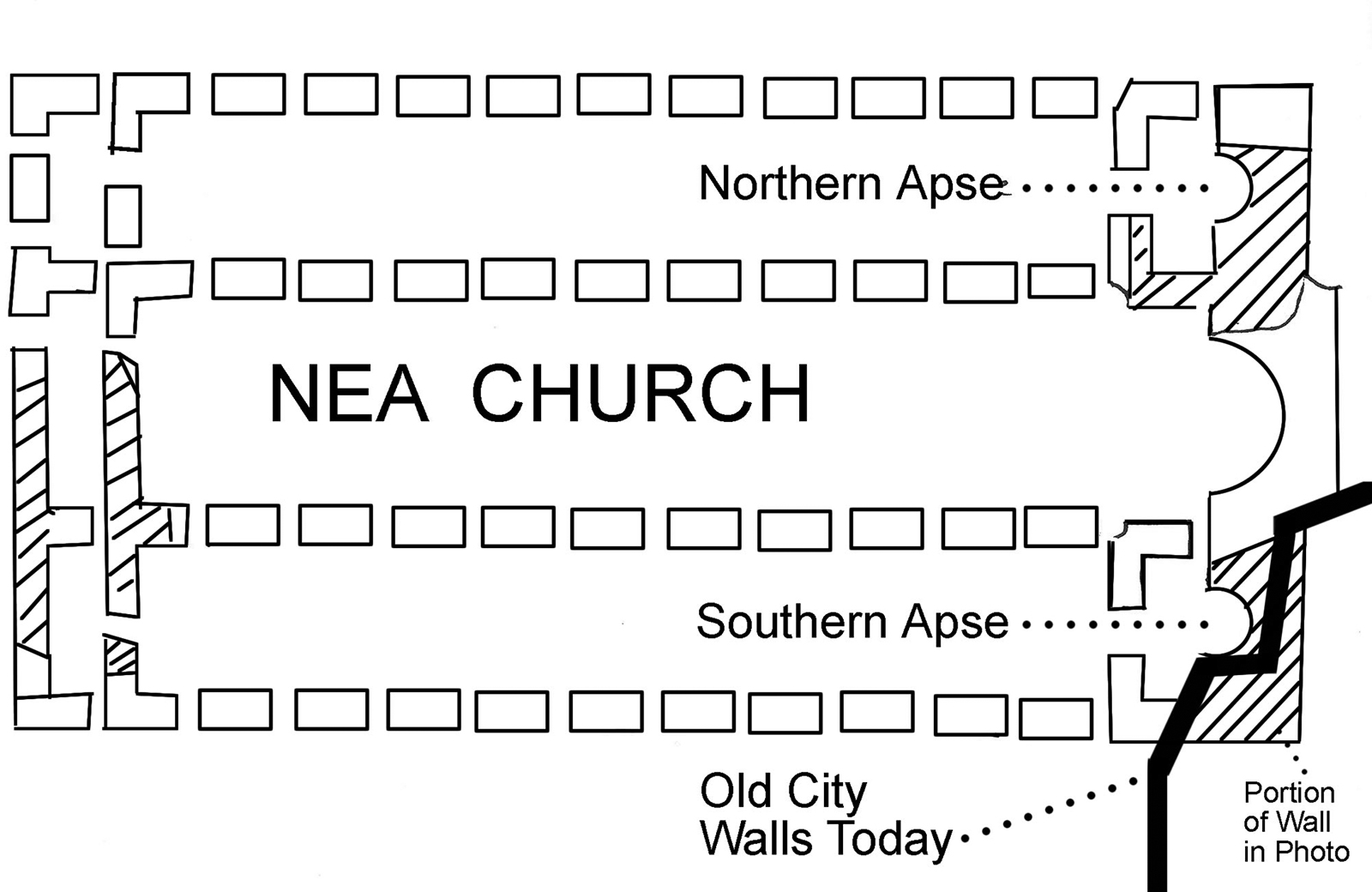
A diagram of the Nea Church. The three or four portions of remains that are visible today are marked with angled, parallel lines.
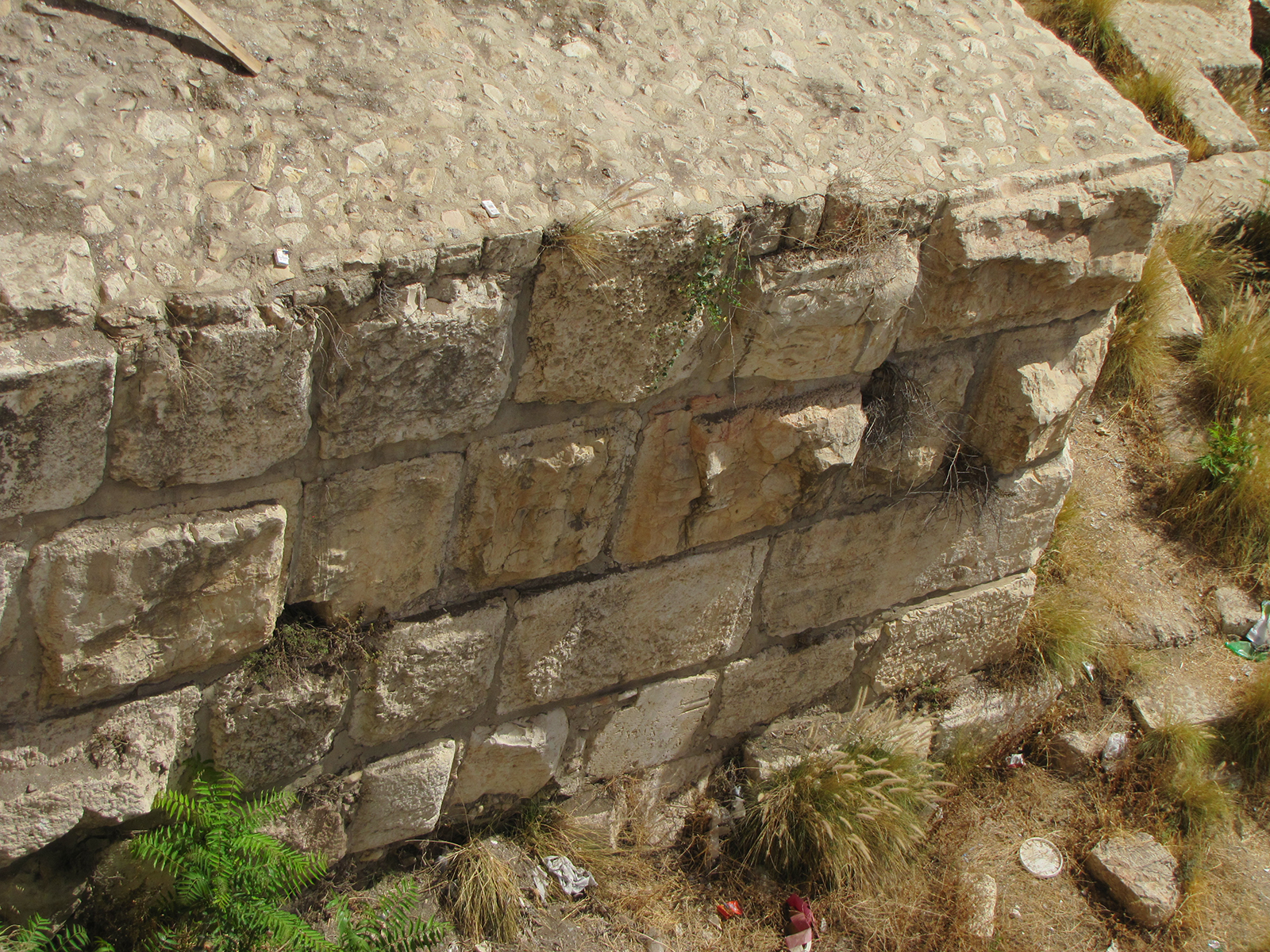
The Nea church survives to a height of 26 feet, with walls that are over 20 feet thick. About 45 of the original 375 feet of wall still remain.
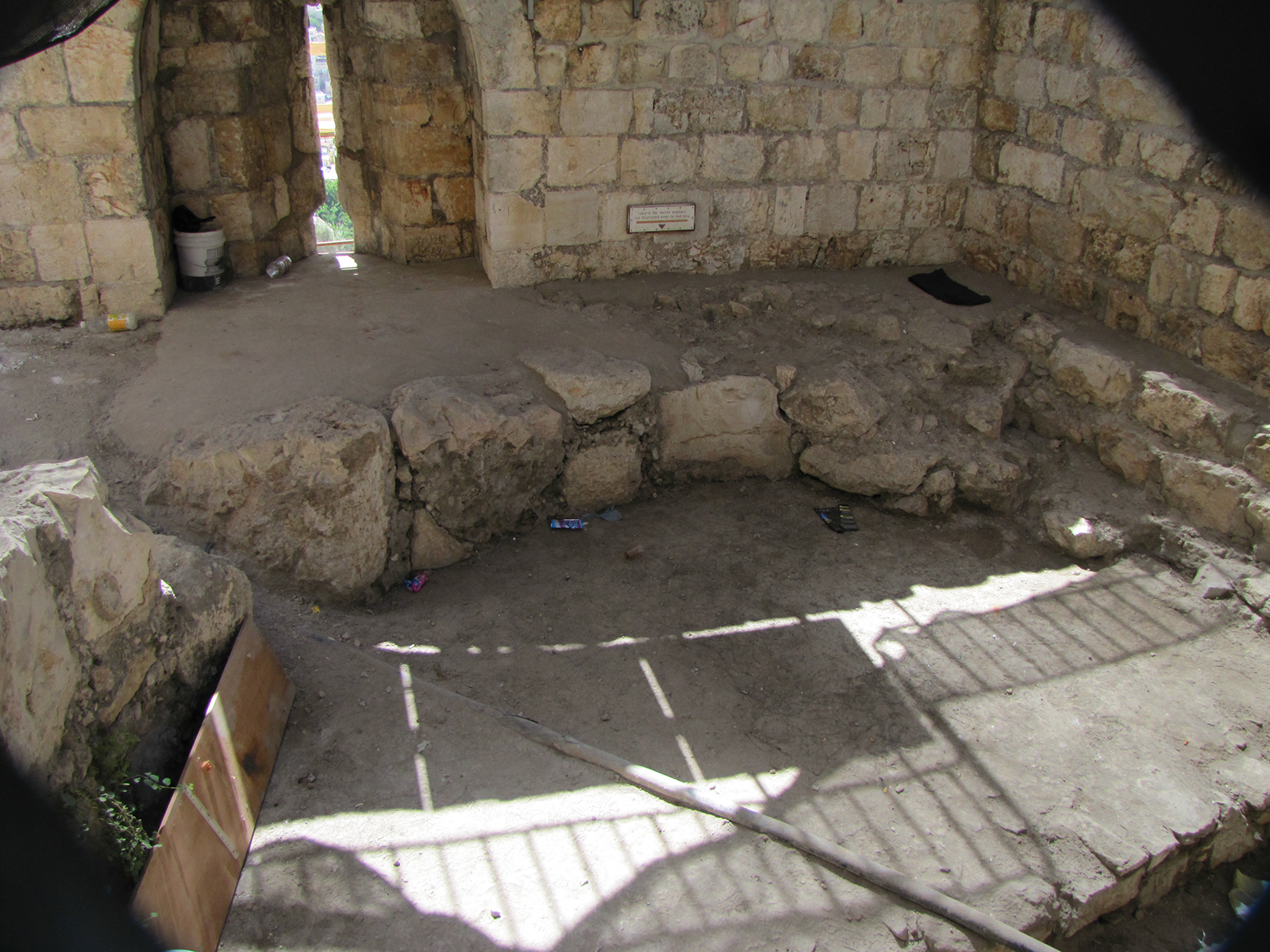
Inside the Nea Church. This photo shows the southern apse in the southeast corner.
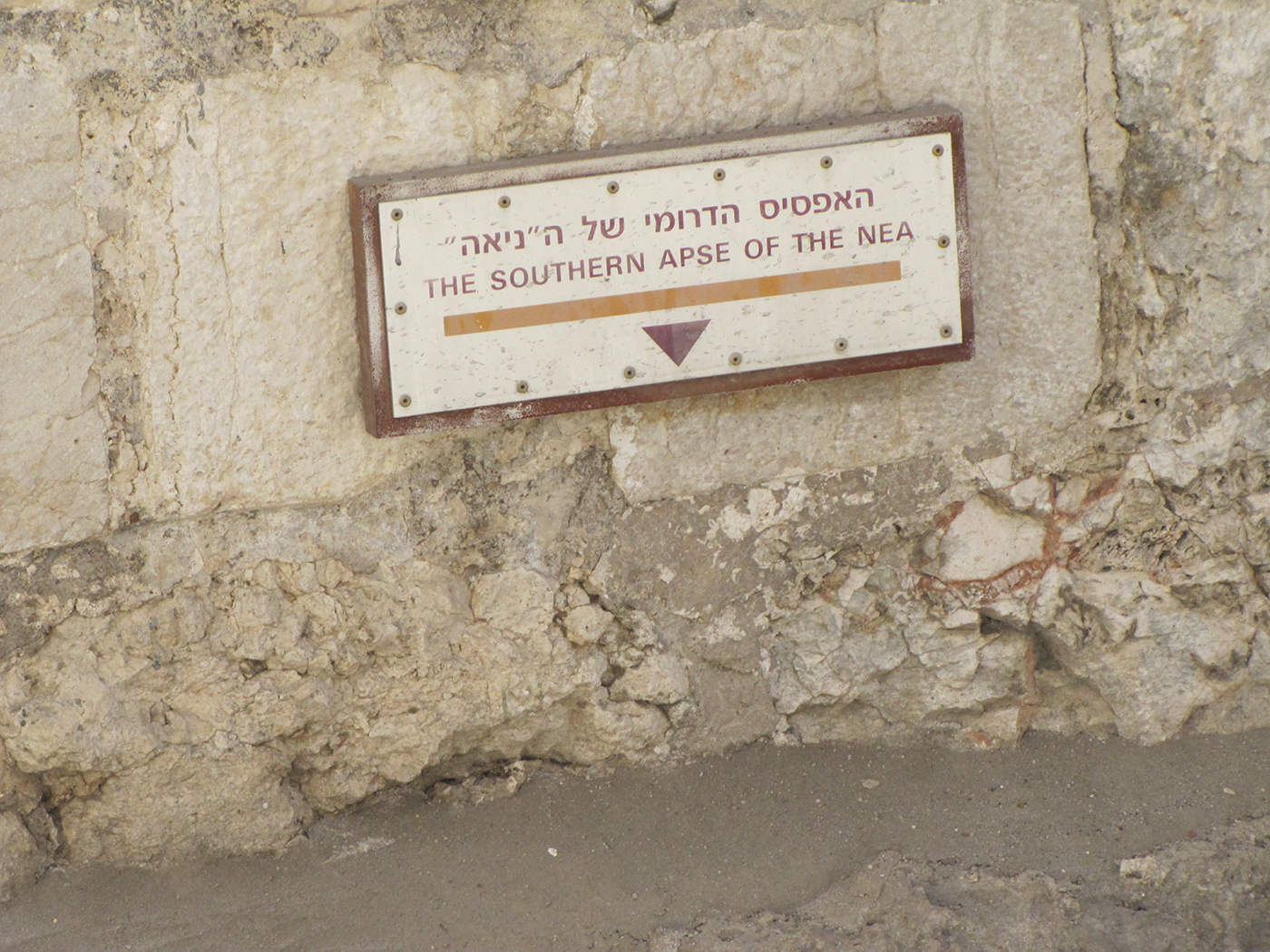
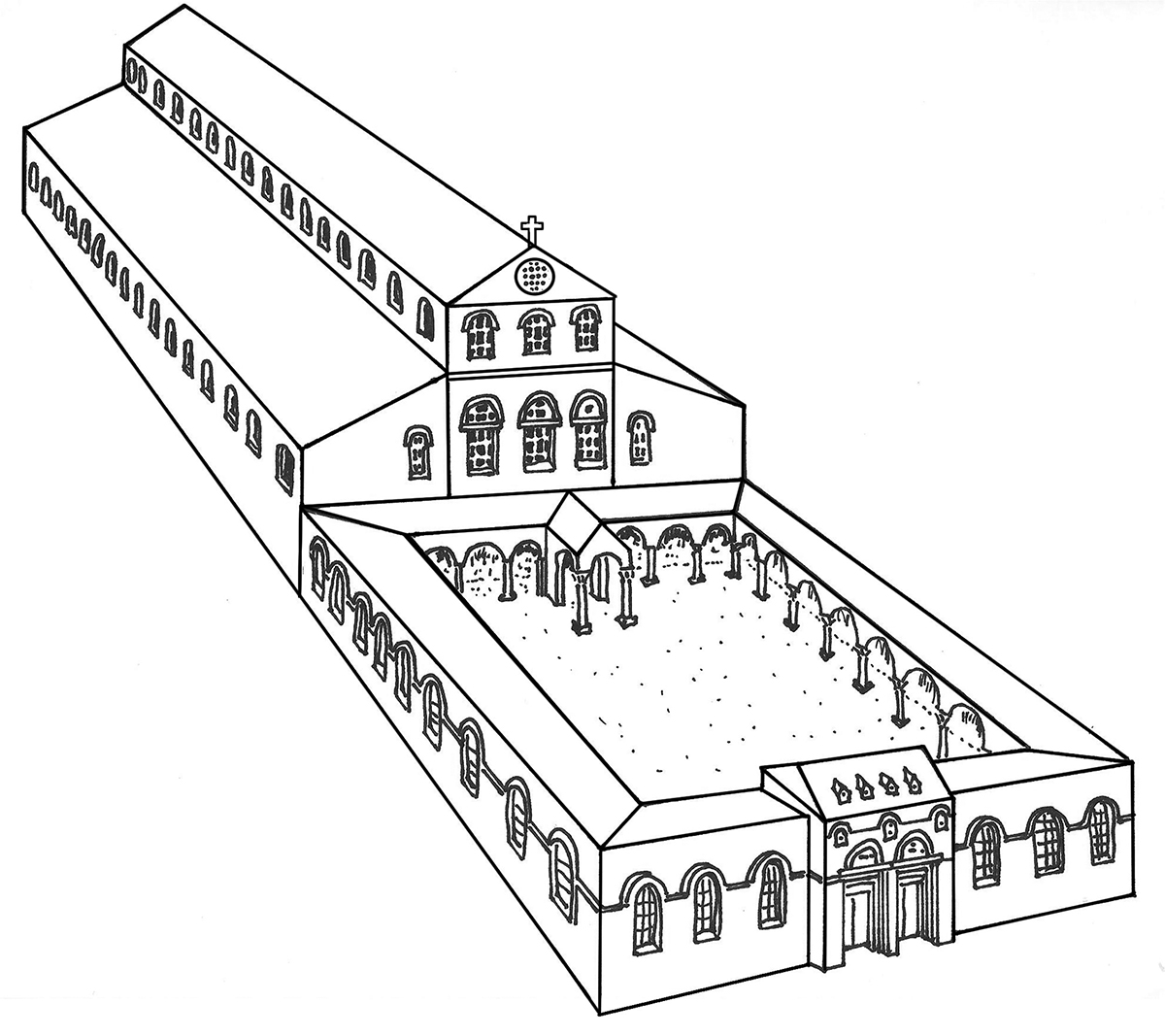
An idea of how the Nea Church would have looked.
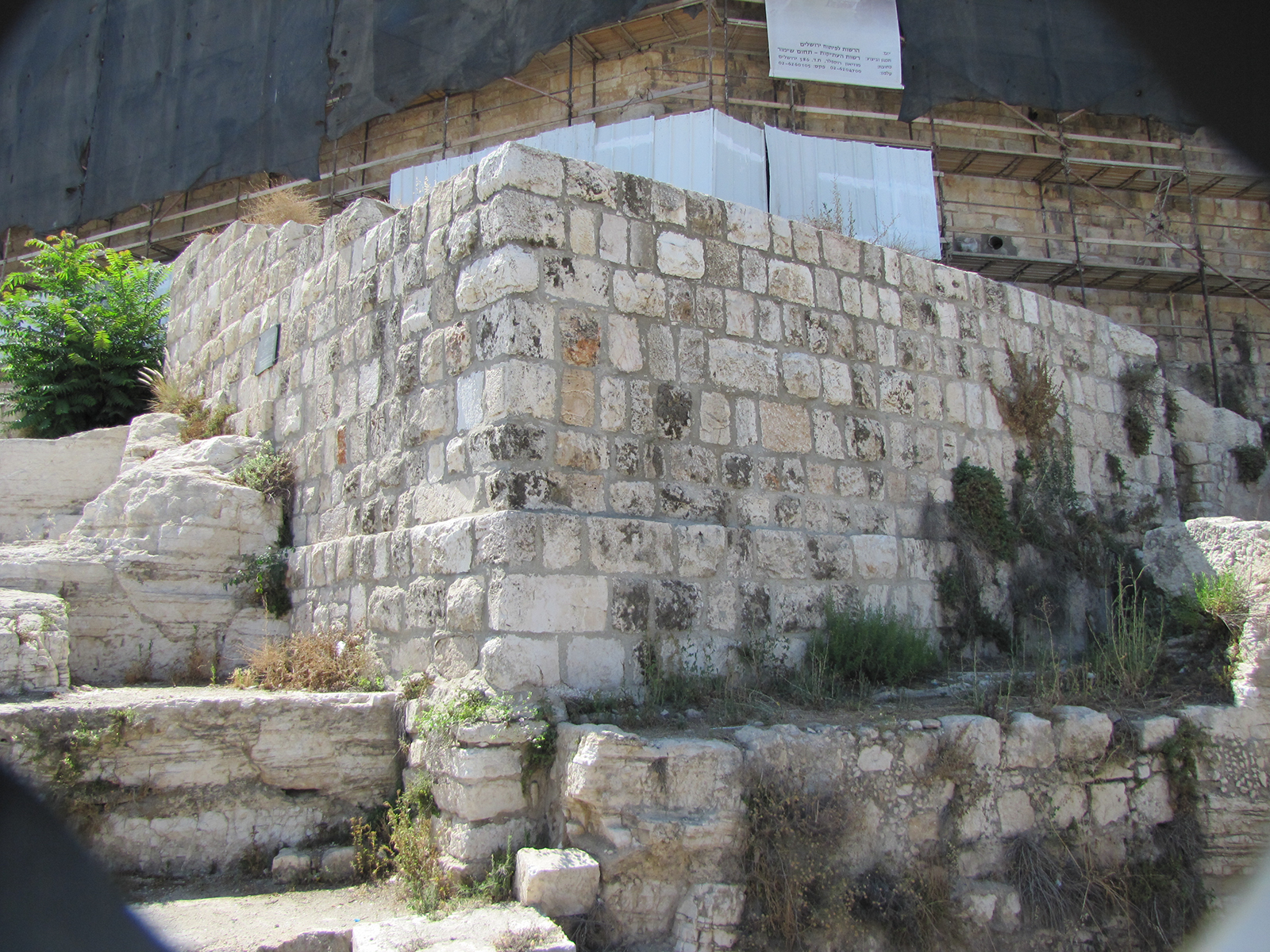
Looking northwest at the southeast corner of the Nea Church.
There are six huge vaulted halls over 30 feet high under the remains of this church. Charles Warren entered and drew these vaults in 1867. An inscription has been found that reads:
And this is the work which was carried out by the generosity of our most gracious Emperor Flavius Justinian, under the care and devotion of the most holy Constatinos, priest and in the year 534/35.